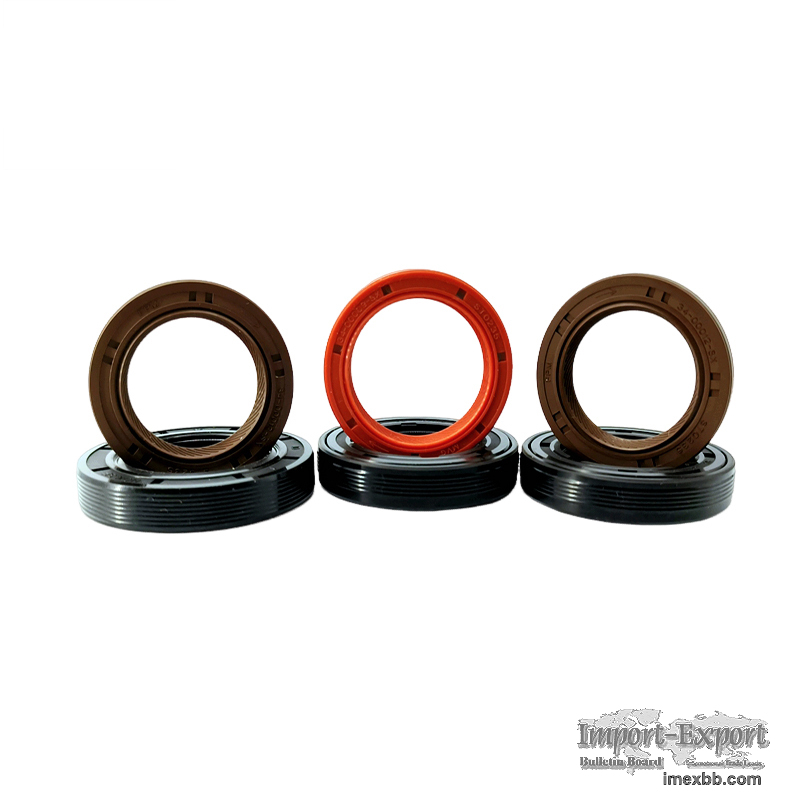 |
 |
Home > Offers to Sell > Others & Excess Inventory > Others
| Contact: | junyingliu |
|---|---|
| Company: | Xingtai Shanfeng special rubber products Co., Ltd |
| Hetou Industrial Zone, Renze District, Xingtai City, Hebei Province | |
| Xingtai City, Hebei | |
| China | |
| Phone: | 18713908608 |
| E-Mail: | |
| Date/Time: | 10/24/23 8:11 GMT |
China Factory Wholesale High Quality Oil Seal Different Types Shat Seals
Oil seals play a crucial role in preventing oil leakage and maintaining the
efficiency of various mechanical systems. However, they are prone to failure
due to various reasons. Understanding the common causes of oil seal failure is
essential for ensuring the smooth operation of machinery and preventing costly
repairs. In this article, we will explore the primary factors that contribute
to oil seal failure.
One of the most common causes of oil seal failure is improper installation.
When oil seals are not installed correctly, they may become misaligned or
damaged, leading to leakage. It is crucial to follow the manufacturer's
guidelines and use the appropriate tools during installation to ensure a proper
fit.
Another significant factor is excessive heat. High temperatures can cause
the oil seal material to degrade, resulting in decreased elasticity and
increased brittleness. As a consequence, the seal may lose its ability to
maintain a tight seal, leading to oil leakage. Regular maintenance and
monitoring of operating temperatures can help prevent this type of failure.
Contamination is another prevalent cause of oil seal failure. Dust, dirt,
and other particles can accumulate on the sealing surface, causing abrasion and
wear. Additionally, chemical contaminants such as acids or solvents can degrade
the seal material, compromising its integrity. Implementing effective
filtration systems and regular cleaning procedures can help minimize the risk
of contamination-related failures.
Furthermore, oil seal failure can be attributed to excessive pressure. When
the pressure exceeds the seal's design limits, it can cause deformation or
rupture. This is particularly common in hydraulic systems or applications with
high-pressure environments. Ensuring that the system operates within the
specified pressure range and using seals designed for the appropriate pressure
levels can help prevent this type of failure.
Inadequate lubrication is also a significant cause of oil seal failure.
Insufficient lubrication can result in increased friction and heat generation,
leading to premature wear of the seal. Regular lubrication maintenance and
using the recommended lubricants can help extend the lifespan of oil seals and
prevent failure.
Lastly, age and wear are unavoidable factors that contribute to oil seal
failure. Over time, the material properties of the seal may deteriorate,
resulting in reduced flexibility and sealing ability. Regular inspection and
replacement of aging seals can help prevent unexpected failures and maintain
system reliability.
Understanding the common causes of oil seal failure is crucial for
maintaining the efficiency and reliability of mechanical systems. Improper
installation, excessive heat, contamination, excessive pressure, inadequate
lubrication, and age-related wear are among the primary factors that contribute
to oil seal failure. By implementing appropriate maintenance practices and
addressing these factors, one can minimize the risk of oil seal failure and
ensure the smooth operation of machinery.
Minimum Order: 100 pieces
SOURCE: Import-Export Bulletin Board (https://www.imexbb.com/)
Similar Products:Not exactly what you are looking for? Post an Offer to Buy!
![]()
© 1996-2010 IMEXBB.com. All rights reserved.
|
|
|





